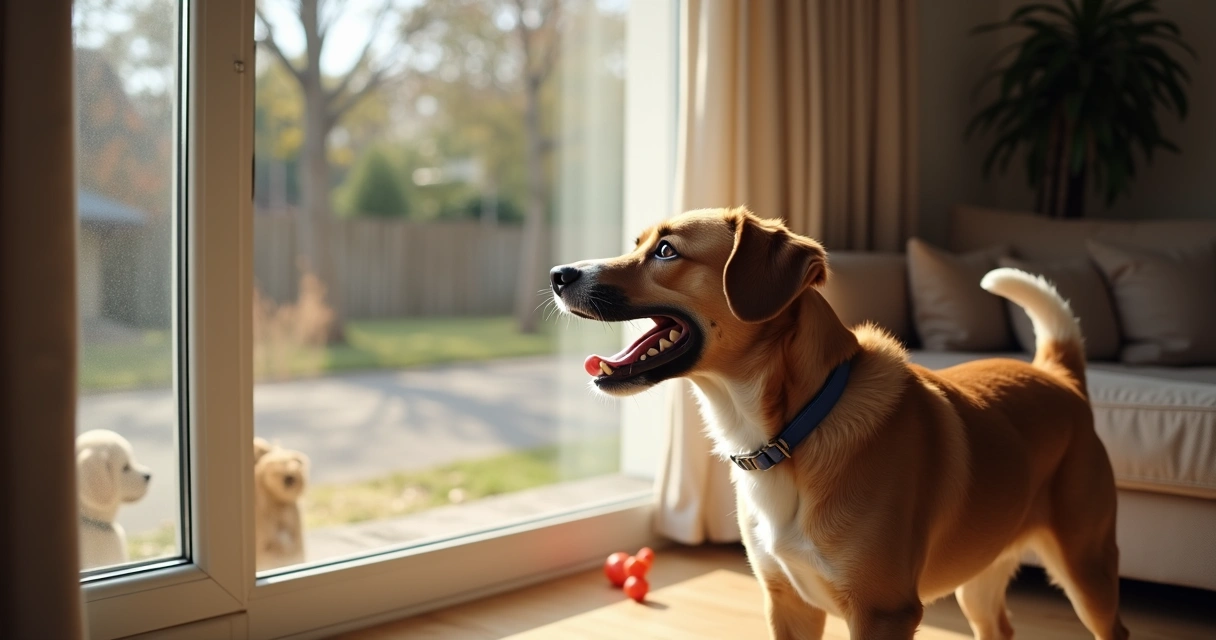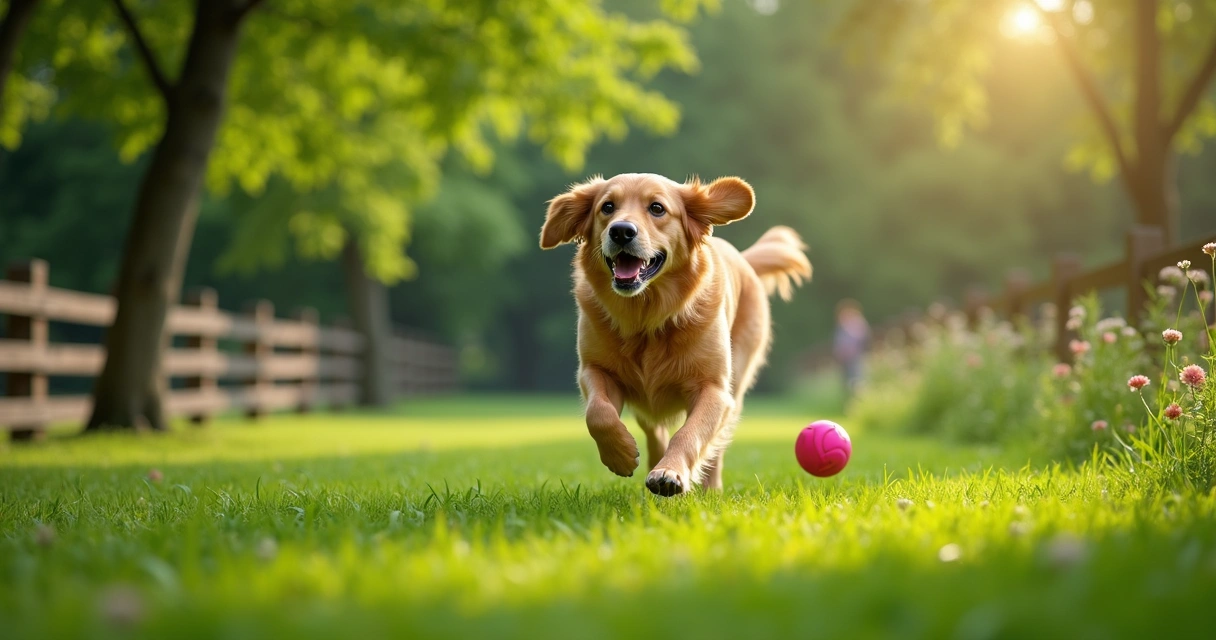Even the most loving, attentive dog owners may overlook certain behaviors that signal deeper trouble lurking below the surface. We often get used to quirks or assume they're "just a phase." But many of these subtle signs can lead to bigger problems—sometimes, sooner than we expect.
Research shows that more than 99% of dogs display behaviors someone might find concerning, such as separation distress, reactivity, or even mild aggression (Texas A&M University study). Some are quite obvious. Others hide in plain sight.
The warning signs often walk quietly beside us.
At Dogtown in Gloucester, MA, we've seen firsthand how early intervention and personalized support can make the difference between happy, balanced pets and ongoing stress at home. Here are eight behavioral red flags in dogs that most owners miss, but shouldn't.
1. subtle withdrawal or avoidance
You come home and your dog greets you, but maybe with a little less enthusiasm. Or perhaps she shyly retreats to another room when new guests arrive. Owners might shrug this off, thinking, "She's just tired today."
But withdrawal or unusual avoidance can hint at anxiety, pain, or social stress—especially if it crops up suddenly.
- Lack of interest in play or walks
- Hiding under furniture or in corners
- Less tail wagging or eye contact
If your normally sociable dog keeps to herself, it's time to look closer at what’s changed. Dogs in supervised groups at daycare services like Dogtown often show more confidence with supportive routines and gentle exposure to new things.
2. unexplained aggression or irritability
Maybe you notice a low growl when touching your dog's collar, or a sudden snap if another animal walks by. It's easy to blame breed, but studies show smaller breeds and certain neutered dogs are actually reported to be more aggressive than some larger breeds, regardless of stereotype. This was revealed in a broad Dog Aging Project study.
Signs to watch for:
- Lip curling or raised hackles
- Snapping at humans or animals (even once)
- Sudden lunges during leash walks
Even mild reactivity, especially when it's not typical for your dog, deserves gentle investigation. Positive training and behavioral correction—like the programs offered at Dogtown’s personalized training—can guide a return to safe, relaxed behavior.
3. excessive vocalization
Barking is how dogs talk, but persistent barking, howling, or whining with no obvious reason can have deeper roots. Some dogs, especially those left alone or faced with unfamiliar sounds, are prone to this, as noted in research on ancient breeds.
It might sound like:
- Barking for long stretches when no one's home
- Howling every time a siren passes
- Whining even when needs seem met
Chronic vocalizing may signal boredom, anxiety, medical pain, or even unspent energy. Social play and structured activities—like those found at well-run day camps—can help channel those instincts in positive ways.

4. compulsive or repetitive actions
You see your dog constantly licking a paw, tail-chasing, or pacing from kitchen to hallway again and again. While sometimes amusing, these patterns can actually mean stress, frustration, or even obsessive conditions.
- Over-grooming or licking to the point of hair loss
- Chasing shadows or lights incessantly
- Pacing in set patterns for long minutes
Addressing the root cause—through physical activity, mental games, or comfort (along with a medical checkup)—usually calms things down. This is one area where knowledgeable grooming teams may spot early signs of over-grooming you never see at home.
5. loss of house training
If a fully trained dog starts having accidents, it's tempting to think it's just a slip-up. Sudden urination or defecation indoors often signal health issues or emotional upset.
- Peeing or pooping in new places
- Marking even with no new animals in the house
- Accidents after visitors or routine changes
It's understandable to get frustrated, but stay calm. Slow steps, like more potty breaks or a return to basic cues, plus a vet check, are the best approach. At Dogtown, regular boarding feedback lets owners catch these changes quickly—even when they're away (boarding updates).
6. poor focus and impulse control
Owners sometimes joke their dog is "just stubborn." But struggling to listen, darting through doors, or grabbing food off counters can reflect low impulse control—and dogs with impulsivity problems are often much more inattentive, according to a large survey on dog personality.
You might see:
- Jumping up despite training
- Dashing away when unleashed
- Barking uncontrollably at moving objects
Polite manners come from repetition and rewards. Working on training focus is one of the core goals of positive reinforcement inside comprehensive training packages at Dogtown.
7. suddenly clingy or needy behavior
A dog that suddenly won’t leave your side is adorable… until it isn't. Excessive following, crowding your space, or frantic greetings can all indicate separation or attachment issues.
According to the Texas A&M survey, separation and attachment behaviors affect nearly 86% of dogs. That’s practically every dog on the block.
- Panic when a family member leaves
- Scratching at doors or destructive chewing during absences
- Crying when out of sight for even short periods
Patience helps, as does gradually increasing safe solo time. For busy households, reliable daycare routines can ease distress and build happy independence.

8. changes in appetite or sleep
It’s easy to miss small shifts—getting up more at night, sleeping more by day, or skipping meals. These don't always mean a medical crisis, but they are changes you shouldn’t ignore.
Notice if your dog:
- Refuses treats or regular food for more than a day
- Seems restless during sleep or wakes easily
- Loses interest in usual cuddle spots or nap times
Sometimes life stress, boredom, or even moving furniture can disrupt a dog's usual routines. Other times, it can signal uncomfortable underlying issues. Keep a log—it helps with both your vet and future trainers!
Why early action matters
Dogs rarely "just grow out of it." Many behaviors are easier to redirect before they become habits. Research shows that dogs who display worrying behaviors—like aggression towards other dogs—may face much longer shelter stays, which just compounds the stress (research on shelter dogs).
Small changes, seen early, can prevent big heartaches later.
Many of these problems can be prevented or turned around with the right support, routines, and positive learning. At Dogtown, all pets get a free pre-enrollment assessment, helping spot these patterns before they grow—and allowing a team approach to joyful, lasting change.
Conclusion
Behavioral changes in dogs are like whispers—soft, but telling. If you notice even small shifts in your dog's manner, energy, or mood, taking gentle action can bring light back into their days (and yours).
At Dogtown, our mission is to provide safe, engaging environments and practical guidance for every dog's unique personality. Whether you’re looking for social play, expert training, grooming, or overnight care, our staff is here to help you interpret those whispers and nurture your pet’s best self.Find out how a personalized approach can support your dog’s well-being—schedule an assessment or browse our day camp, daycare, boarding, training, and grooming options any time.
Frequently asked questions
What are common dog behavioral red flags?
Some of the most common warning signs include sudden withdrawal, excessive barking or whining, unexplained aggression, repetitive or compulsive actions, loss of house training, poor attention or impulse control, clinginess or separation distress, and changes in sleep or appetite. Many owners overlook or excuse these behaviors as ‘just how their dog is’, but research like the Texas A&M dog behavior survey and studies on aggression and stress suggest they often signal deeper stress or health issues.
How can I spot early warning signs?
Be observant of any unusual shifts in your dog’s routines, interactions, or body language. Early red flags might be subtle: less tail wagging, pacing, gentle growling, or sudden attachment to you. Keep notes, watch for patterns, and trust your gut—if something feels ‘off,’ it’s worth a second look. Talk with experienced trainers or your veterinarian if you’re unsure. Facilities like Dogtown also offer pre-enrollment assessments to help spot these signs early.
When should I see a vet?
Always check with a vet if your dog has abrupt or severe behavior changes, sudden aggression, house soiling in an adult dog, or noticeable shifts in eating and drinking. Medical problems can cause or complicate behavior changes (for example, urinary issues might explain overnight accidents). If your dog’s behavior puts themself or others at risk—biting, destroying objects out of panic, or not responding to usual training—a veterinary exam should be the first step before further training or adjustments.
Are behavior changes always serious?
Not always. Sometimes, small changes in behavior relate to temporary stress or shifts in the environment. But even minor behaviors can be early signs of discomfort, confusion, or underlying health issues. It’s best not to ignore them. Most concerning patterns are much easier to redirect if noticed early, so gentle curiosity pays off. Facilities with informed staff, like Dogtown, are skilled in distinguishing between minor worries and true red flags.
How to help a dog with issues?
Support starts with patience, calm routines, and clear communication. Try to identify stresses or triggers, provide enrichment, use positive reinforcement, and avoid punishment. For persistent issues, work with professional trainers who specialize in positive behavioral change, such as those on staff at Dogtown. In some cases, routine or environment adaptations—like consistent daycare, regular grooming, or more structured walks—make all the difference in your dog's happiness and stability.





